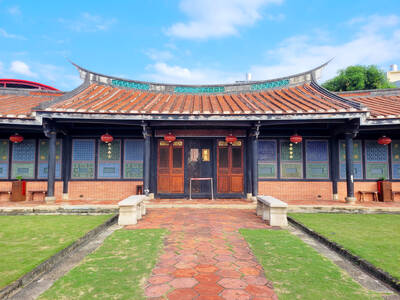As peak summer approaches in Sicily, Anna Fiannaca prefers the peppers, eggplants and zucchini her brothers grow over the packaged food in the supermarket.
The 89-year-old cooks everything from scratch and eats mostly vegetarian. But she attributes much of her continued good health to adjusting her diet to what is most available throughout the year.
“It was just the way of life in Sicily, taking whatever the seasons will give you,” said Fiannaca.

Photo courtesy of Wikimedia Commons
Eating a variety of fruits and vegetables is one of many aspects that makes the Mediterranean diet healthy. It also includes an abundance of nuts, legumes, beans and healthy fat from olive oil and fish.
But nutrition experts say no matter where you are, buying in-season produce is an easy step toward better eating habits.
“Seasonal eating is kind of a pathway to build a broader diet variety,” said Sharon Gray, a registered dietician who supervises the University of Connecticut’s community nutrition program.
WHY IS SEASONAL EATING BETTER FOR YOU?
Consuming a high variety of fruits and vegetables is an important part of good nutrition, lowering the risk of heart disease, obesity and other ailments.
Choosing whatever is most abundant in the market each month is a good way to start, said Gray, who offers healthy cooking workshops to low-income Hartford residents. In New England, the summer’s tomatoes, berries and peaches give way to autumn’s pumpkins, squash and cranberries. All are high in antioxidants and fiber, and provide a wide range of vitamins, minerals and complex carbohydrates.
It helps that in-season produce tastes better.
“A lot of adults don’t like a lot of fruits and vegetables, so if you can get them to like something, then they build it into their diet,” she said. “That is moving people away from processed food to preparing more food at home.”
Eating seasonally often also means eating locally, said Julia Zumpano, a registered dietician at the Cleveland Clinic, specializing in disease prevention and management. Besides the environmental benefits, local produce generally has more nutrients because it has naturally ripened and is consumed soon after being picked.
“You’re going to maximize your vitamins and minerals in there, the polyphenols and antioxidants that are the foundations of how we decrease the risk of disease,” Zumpano said.
HOW DO YOU GET STARTED?
Changing your diet requires a bit of an open mind, said Sean Heffron, cardiologist at the Center for the Prevention of Cardiovascular Disease at NYU Langone Heart. He counsels patients to look beyond the broccoli, onions and other vegetables that are available year round.
“Open yourself up to, ‘Oh, now I see a lot of asparagus or peaches or artichokes,’” Heffron said. “It will expose you to more, and make you willing to try and eat more fruits and vegetables in general.”
Gray noted that farmers markets, many of which now accept food benefit programs like SNAP, have become more widespread. But she also recommended shopping at regional grocery chains, which may be more likely than national retailers to offer local produce.
She tells people to look at fliers and signs in the store to see what is on sale, which is usually an indicator of seasonal abundance. Besides saving money, it allows people to buy pricey items like berries that can be frozen to eat later in the year.
Zumpano suggested signing up for a Community-Supported Agriculture program, or CSA, that delivers a box of produce that changes with the season. “You don’t get to pick and it just comes every week,” she said. “I usually have to purchase additional food, but I can use that as a great foundation.”
Experts caution that eating seasonally isn’t a cure-all, and some studies have found people in colder climates suffer from nutritional deficiency in the winter. That means you should still continue to buy leafy greens and other vegetables all year.
“We need seven to nine servings of fruits and vegetables every day,” Zumpano said. “Ninety percent of us don’t eat enough of them.”

When 17-year-old Lin Shih (林石) crossed the Taiwan Strait in 1746 with a group of settlers, he could hardly have known the magnitude of wealth and influence his family would later amass on the island, or that one day tourists would be walking through the home of his descendants in central Taiwan. He might also have been surprised to see the family home located in Wufeng District (霧峰) of Taichung, as Lin initially settled further north in what is now Dali District (大里). However, after the Qing executed him for his alleged participation in the Lin Shuang-Wen Rebellion (林爽文事件), his grandsons were

A jumbo operation is moving 20 elephants across the breadth of India to the mammoth private zoo set up by the son of Asia’s richest man, adjoining a sprawling oil refinery. The elephants have been “freed from the exploitative logging industry,” according to the Vantara Animal Rescue Centre, run by Anant Ambani, son of the billionaire head of Reliance Industries Mukesh Ambani, a close ally of Prime Minister Narendra Modi. The sheer scale of the self-declared “world’s biggest wild animal rescue center” has raised eyebrows — including more than 50 bears, 160 tigers, 200 lions, 250 leopards and 900 crocodiles, according to

They were four years old, 15 or only seven months when they were sent to Auschwitz-Birkenau, Bergen-Belsen, Buchenwald and Ravensbruck. Some were born there. Somehow they survived, began their lives again and had children, grandchildren and even great grandchildren themselves. Now in the evening of their lives, some 40 survivors of the Nazi camps tell their story as the world marks the 80th anniversary of the liberation of Auschwitz-Birkenau, the most notorious of the death camps. In 15 countries, from Israel to Poland, Russia to Argentina, Canada to South Africa, they spoke of victory over absolute evil. Some spoke publicly for the first

I am kneeling quite awkwardly on a cushion in a yoga studio in London’s Shoreditch on an unseasonably chilly Wednesday and wondering when exactly will be the optimum time to rearrange my legs. I have an ice-cold mango and passion fruit kombucha beside me and an agonising case of pins and needles. The solution to pins and needles, I learned a few years ago, is to directly confront the agony: pull your legs out from underneath you, bend your toes up as high as they can reach, and yes, it will hurt far more initially, but then the pain subsides.